One dead, two in hospital after crane hits power-lines 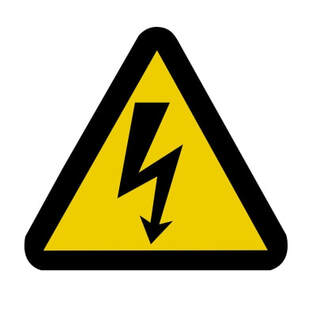 Image courtesy of zdiviv at FreeDigitalPhotos.net Image courtesy of zdiviv at FreeDigitalPhotos.net Damaging utility lines (gas, electrical, water and fibre optic cables) can be dangerous when it involves gas and electricity and it’s expensive to repair broken lines. In addition, it often disrupts the construction project while repairs are carried out, possibly resulting in delays. Damaging utility lines may also disrupt services to the client and the neighbours. What a fine way to start a construction project – upsetting the neighbours and the client at the project start because construction work cut their power or water. It’s imperative to locate all the existing utility lines and clearly mark them, then ensure that all workers are aware of their presence. Unfortunately on several of my construction projects, even though the location of utility lines were known, workers were careless and still managed to damage them. Workers must take care when working near these cables and pipes, even excavating by hand close to services. If there’s any concerns that the pipe or cable has been damaged they should immediately notify you. Sometimes a cable or pipe is only slightly damaged and the problem isn’t reported or detected. These damages only become apparent after work has happened over the lines, possibly concrete slabs have been poured over the area, even complete buildings have been finished. Damaged cables may eventually blow when the ground is wet, or water from a leaking pipe may finally become visible on the surface. Finding the problem at this stage is difficult and expensive, involving digging up the completed work to get to the problem.  Image courtesy of Good-start at FreeDigitalPhotos.net Image courtesy of Good-start at FreeDigitalPhotos.net Overhead electrical cables are dangerous, and care must be taken that equipment doesn’t come in contact with the cables. In a recent accident in Australia one person was killed and two injured when a crane came in contact with power cables. Even steel items coming within two metres of a live high voltage electrical cable can cause a flash over of electrical current, which will damage equipment and cause serious injury to operators or workers. Workers carrying long metal items (such as aluminium ladders or reinforcing steel) shouldn’t come in contact with overhead cables. Low overhead cables should have a marker line at least a metre below it to highlight and protect the cable. Where possible the authorities should lift or move overhead cables which obstruct or restrict construction work. Regrettably, even newly installed utility pipes and cables on the project are often damaged by workers who are digging or drilling in the vicinity and haven’t been informed of the cables and pipes. I’m sure most of us have had water pipes and power cables damaged on our construction projects. What’s been the worst result?  Do you want to learn more construction management tips and advice - read 'The Successful Construction Supervisor and Foreman'. This is what one reader said: "I have read this book and I found many practical lessons for those interested in construction Projects. I strongly recommend it to Project Managers, Construction Managers, Senior and young Engineers. They will avoid many mistakes that I have done unfortunately during my career on many construction sites. Good lecture and many thanks to the Author". © 2019 This article is not to be reproduced for commercial purposes without written permission from the author.
1 Comment
Heatstroke kills 32 year old former athlete Image courtesy of solargaria at FreeDigitalPhotos.net Image courtesy of solargaria at FreeDigitalPhotos.net Recently the sports world was rocked by the death of a young former football star who died from heatstroke. See the reports from the BBC and CBS news. World temperatures are rising and recently parts of Europe and the USA have experienced some of the hottest recorded temperatures. This last summer Australia also experienced record breaking temperatures. So what can we do about heatstroke? Well this report from the BBC tells us more about the effects of heat on the body. Those in construction are at particular risk of suffering heat related illnesses since they are often expected to do hard physical tasks for long hours, often out in the open. Dealing with hot weather on construction projectsIt's important that everyone on your construction project is aware of the risks that high temperatures pose. Everyone must be aware of the early symptoms of heat exhaustion so they can take quick corrective action before the situation deteriorates to full heatstroke. There should always be an adequate supply of cool fresh drinking water and workers must be encouraged to drink lots of water. Workers must be allowed to take frequent rest breaks in a cool environment. Where possible try and start work earlier when the day is still cool. Possibly schedule some tasks for the night - particularly pouring concrete. Rotate workers so that one worker isn't working on a strenuous task all day. Be aware that people on medication, those taking drugs or consuming excess alcohol and caffeine may be more susceptible to suffering the ill effects of high temperature. Those use to working in more moderate and cooler climates are also not as use to working in hot conditions as others may be who have become acclimatised to these conditions, so it's important to understand that people will be impacted differently by the heat. High temperatures will impact productivity, but the construction schedule should not endanger people's lives. Extreme temperatures above the norm may be reason to lodge a variation claim with the client. Of course heat doesn’t also impact people’s lives it can impact concrete and other products. Concrete, mortar, adhesives and paints will all dry out rapidly, which could lead to problems with finishing the work as well as cracking and other problems. Take adequate precautions to ensure that heat doesn't endanger safety or impact quality on your construction project. Working in a cool office may insulate you from the severe heat while others on the project have to deal with the full impacts of the hot temperatures. How will your construction project deal with the high temperatures? © 2019 This article is not to be reproduced for commercial purposes without written permission from the author.  Do you want to learn more construction management tips and advice - read 'The Successful Construction Supervisor and Foreman'. This is what one reader said: "I have read this book and I found many practical lessons for those interested in construction Projects. I strongly recommend it to Project Managers, Construction Managers, Senior and young Engineers. They will avoid many mistakes that I have done unfortunately during my career on many construction sites. Good lecture and many thanks to the Author".  Image courtesy of Stuart Miles at FreeDigitalPhotos.net Image courtesy of Stuart Miles at FreeDigitalPhotos.net The potential for major consequence in projects doesn’t get much riskier than a construction project, where there is a fine line between minor/moderate consequences and major/catastrophic consequences. Arguably, the most important part of construction management is the risk assessment, as keeping the company, your staff, surrounding bystanders, stakeholders and you safe is pivotal in achieving a successful construction project. The question that should always be asked before construction proceeds is: “What are the risks?”. The answer to this question changes with every construction project, as different problems arise all the time, and problems you may have experienced on some construction projects may not appear for other projects, while other risks which weren’t previously a problem become potential hazards now. So, what are some of the risks you need to look out for? Continue reading and I will instil some risk assessment wisdom upon you with this short list. Construction project risks
If I was to list every single construction project risk you need to look out for, this would be a long list. However, hopefully this post helps open some eyes to the plethora of problems that can arise in construction projects so that you can be prepared for some of these issues if they were to crop up. BIO: Kevin Banks is the director of KB GPR surveys. He has many years’ experience in the GPR sector, and his staff come from a range of backgrounds, so they can deliver a unique service which is efficient, cost effective and accurate. 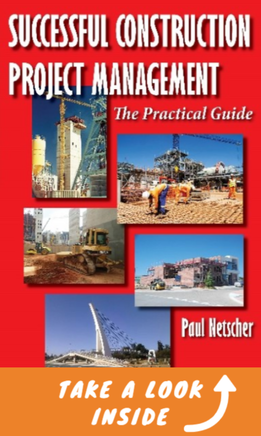 Want to read more construction management tips and insights? Read 'Successful Construction Project Management: The Practical Guide' by Paul Netscher Public money spent on construction projects which aren't needed and can't be maintained Image courtesy of Simon Howden at FreeDigitalPhotos.net Image courtesy of Simon Howden at FreeDigitalPhotos.net I'm sure you all have examples of construction projects which have cost a fortune and now lie unused and un-maintained. The World is littered with mega failed construction projects which often were built for political gains or to satisfy egos. The wrong project built in the wrong place. Projects that cost the public a huge amount of money and now there's no money to maintain the new facility. Money that could have been better spent elsewhere. Classic examples of poor project management. Read this ABC News story about a $120 million airport that is empty most days of the week and a $500 highway to nowhere. Million dollar gambles with public money which may never payoff. Infrastructure which cannot be maintained. 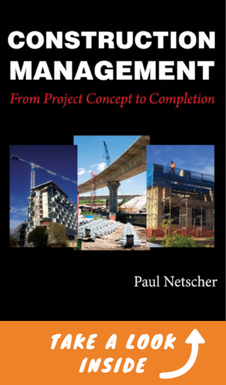 Want to learn how to avoid white elephant projects? This construction project management book is essential reading for project owners and project managers who are planning construction projects which will save time and money and ensure that the project satisfies all the owner’s requirements with minimal fuss. The book takes readers from developing the project concept, to planning, design, selecting contractors, managing construction, and finishing the project. See more info on 'Construction Management: From Project Concept to Completion' or take a sneak preview look at the book by clicking on the image. 5 ways to reduce heat in our cities Image courtesy of Keerati at FreeDigitalPhotos.net Image courtesy of Keerati at FreeDigitalPhotos.net The number of extreme heat days will rocket across the US, according to a new climate change report which predicts hundreds of cities experiencing month-long temperatures above 100F (38C) by 2050. Roughly 80% of Americans live in cities, equating to around 262 million people. Cities are almost always hotter than the surrounding rural areas, thanks to the urban heat island effect. These heat islands are caused by numerous factors, such as trapped waste heat, concrete structures and pavements absorbing the sun and tall buildings blocking the wind. All of these components contribute to air temperatures in cities that can be up to 22F hotter than neighbouring regions with less urban development. A warming planetary climate means temperatures in heat island areas will continue to rise, with desert states such as Texas, Nevada and Arizona particularly affected. Read how city planners, architects and construction engineers are helping make cities cooler in this article from the BBC  Interested in learning more about project management and how your projects can be more sustainable? 'Construction Management From Project Concept to Completion' takes you through all the phases of construction projects from the concept and planning phase ensuring you build the right project in the right place. A project that will yield the best results through the life of the project.  Even building the right house in the right place can radically reduce your energy costs and make for a more pleasant home for you and your family. For design ideas for your new home read 'An Introduction to building and Renovating Houses Volume 2 Finding Your Ideal Property and Designing Your Dream Home' Crossrail costs heading more than 20% over previous estimates and more than 2 years lateThere has been an "unacceptable" lack of accountability over the delays to Crossrail, a report has said. Crossrail, Europe's biggest infrastructure project, had been due to open in December 2018, but will not now open fully until 2020 at the earliest. Three emergency cash injections have seen the cost of the route rise from £14.8bn to £17.6bn. The Department for Transport (DfT) said it "absolutely rejects" claims there was insufficient oversight. Both the DfT and Transport for London (TfL) are joint sponsors of the project, which is run through an "arms-length" body, Crossrail Ltd. Read further the BBC's report and Also from the BBC London's Crossrail project will probably go even further over budget, according to a report by MPs. Commuters have been "let down" by a programme that is well behind schedule, the Public Accounts Committee said. MPs said they were "sceptical" about the Department for Transport's "ability to oversee major rail projects". Crossrail in numbers
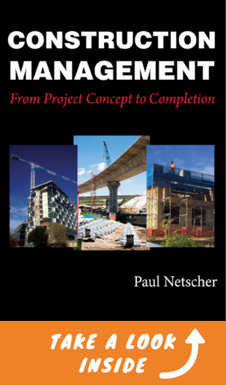 This construction project management book is essential reading for project owners and project managers who are planning construction projects which will save time and money and ensure that the project satisfies all the owner’s requirements with minimal fuss. Construction ProblemsWhen a design error leads to the collapse or serious damage of a structure construction companies face the wrath of the public as well as possible legal action. Inevitably there will be damage to the contractor’s reputation. Construction projects completed on time and under budget aren’t unheard of, but they’re often the exception rather than the rule. According to an Economist feature story, America’s construction productivity halved in the last 50 years — being the worst-performing industry. Home to some of the world’s largest construction firms the U.S. is a construction powerhouse second only to China, but regrettably still an industry with a disturbing over-reliance on labour when technology should be playing a bigger part. But this is only part of the problem. Construction projects are often beset by poor quality, unsafe worksites and design faults. There are several reasons for these issues, and one of them is the slow adoption of technology. Construction project managers are tackling evolving infrastructure demands, often an increase in paperwork, a shrinking skills pool, new methods and technology, cost pressures and more demanding clients. Regrettably when contractors employ technology and new systems to help them they often select technology based on price or which supplier gave the best demonstration, even when the technology or system isn’t necessarily the best fit for the company, client or project. Another issue is that contractors are notoriously bad at training their employees on how to operate and employ new technology and systems. Then, when there are failures the technology is blamed and is abandoned, often at enormous wasted expense. Contractors and clients are often wary of introducing new technology and systems to their construction projects based on their previous bad experiences, as well the high cost of setting up some of the technology. In the end the overall benefits of many new technologies aren’t seen on construction projects. In this era the new generation of workers have literally been born with a smart phone or device in their hands. It’s an everyday tool in all parts of their life. Yet, when they enter the construction industry they often find that many of the systems they are expected to use are paper based. For a technology influenced generation entering construction may seem like a technology desert, so many millennials leave the industry to work in more tech-advanced fields. This contributes to labour shortages in the construction industry making it harder for construction companies to operate. In the history of construction project failures some of the most persistent failures come from the most obvious causes. The construction industry seems slow to learn from mistakes and to implement strategies to prevent them from reoccurring. Below are some of the more common construction problems: Structural Design ErrorsUnclear design specifications create problems at a jobsite. Clients don’t always adequately articulate project requirements and outcomes so that contractors and owners can have the same expectations and work to a common goal through the project until project closeout. Contractors, designers and the client working together from the start of the project helps minimise issues and ensures a successful project though the full lifecycle of the project. The latest investigation by the U.S. Department of Labor’s Occupational Safety and Health Administration attributed the collapse of the Florida University pedestrian bridge to faulty structural design. As cracks formed on the concrete truss, they weren’t regarded as safety concerns by the engineer on record. Upon investigation, it was found that the truss was a non-redundant structure whose diagonal members needed to be secured since the risk of a collapse would be high if even one member failed. Some other common design errors include:
Prevention tactic: Critically evaluate design specs with designers/architects by double-checking values of structural elements and adopting appropriate building standards. A good review of each installation will ensure the structure has been designed correctly. Appoint professionals to oversee each installation. Faulty Construction PlansConstruction plans outline project specifics that go beyond just laying out work breakdown structures. Essential components include:
Prevention tactic: Most construction plans lack adequate information when unexpected problems occur. While planning the development of a building construction managers need to work closely with safety managers, risk analysts, and all contractors to document a contingency management strategy. Communication Failures
Prevention tactic: Choose project management software with flexible communication options that enables collaboration regardless of your location, time zone, and task type. Ensure that your team and every other relevant team is updated on recent drawings or client change orders in order to prevent rework. Construction Equipment FailsNon-compliance with OSHA safety regulations: Given the high incidence of accidents and hazardous encounters on jobsites OSHA’s safety guidelines prescribe procedures for all types of construction work. Projects usually require various machines and items of equipment, from portable electric tools to cranes and large earthmoving machines. Older equipment often doesn’t meet the required safety standards which can threaten worker lives and result in fines and imprisonment for contractors and owners. Problems with construction equipment include:
Prevention tactic: Project managers need to hand over smart communicative devices to workers that live-record what’s communicated in every interaction through cloud-based software. Additionally, all equipment must undergo visual inspections based on manufacturer guidelines and owner-specified guidelines for a more thorough maintenance to ensure it performs optimally. Poor Construction Management Practices
Prevention tactic: Scope creep, changes and delays must be documented, and all parties notified immediately these occur. Encouraging jobsite collaboration through smart communicative devices will keep your workforce intact. ConclusionConstruction errors result in project failure for both owners and contractors. By integrating smart technology with properly trained workers construction companies can forecast and mitigate risks across the value chain. Invariably, vulnerabilities and uncertainties will arise either out of shifting client demands or changing market needs. With a functional team and constructional management system project managers can prevent minor issues becoming huge problems. How have you prevented failures in your project management career? Bio: Gagandeep Bimbh I’ve been writing about breakthrough construction technologies when they were considered nascent. I aspire to guide B2B audiences in onboarding the best construction management software through topical and thought-leading content. 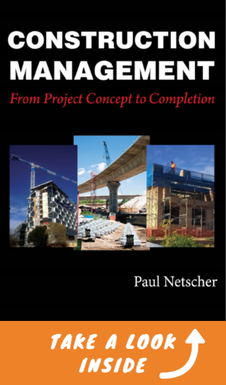 Do you want to learn more construction tips and insights? Ensure your project is a success. Read 'Construction Management From Project Concept to Completion' available from Amazon and other bookstores. 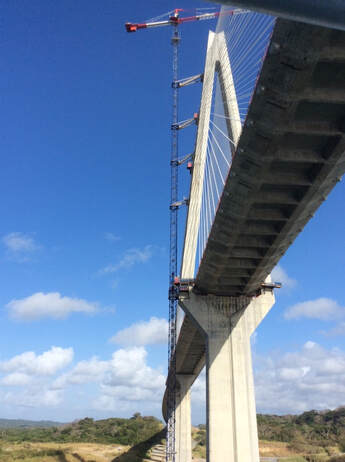 Overview Big Data since its emergence in the construction industry has brought significant changes from safety to productivity. Areas of the construction industry where Big Data can be useful include resource tracking and management, improving the decision-making processes, budgeting and costing, and reducing project risks. The construction industry is known for waste, poor productivity and rework. Yet the industry has been slow to embrace new technology. Big data has given a positive impact to the construction industry and reduced the cost of waste and remedial work, thus boosting the profit margins of construction companies. Many companies are trying to change their business model to adopt big data technology. The earlier scenario of the construction industry storing data was complicated as everything stored was on paper and filed once the project was completed. Construction now has a surplus of data but lacks a good tool and algorithms to process the data properly. Big data as the name suggests uses the large amount of data and analyzes and implements it in the right manner. Technology such as drones, wearables, smartphone sensors on job site, and GPS systems are evolving in construction with collaboration of Big Data Analytics, which can store data easily and can access it from anywhere. When big data is merged with machine learning systems the future outcome can result in competitive advantages to the construction industry as data collected can be processed and analyzed for future estimation and bidding. Data collected such as tracking data of workers through smart technologies, tracking of material and equipment through sensors, etc. must be captured in a structured way to make the data easily analyzed by right systems. Data is collected from an internal and external source such as labor hours, material used, daily production, operational data, and more. BIM Clash Detection Services data is collected and construction data for scheduling task and logistics data. Changes that Big Data can bring in the Construction IndustryBig Data in the construction industry has brought some changes that aid in the overall productivity of the construction process. It enhances productivity: - Big Data aids in improving productivity in the process of construction projects. To make the job site more effective, wasted time in moving materials, people and equipment around the project site can be reduced. Technologies such as drones and wearable devices can be used here along with big data to track the materials or things that are moving about the construction site. Workers can be tracked and supervised through technology and this data can be beneficial to reorganize the site to make tools and materials more accessible to them. It will ultimately help the workers to perform their tasks better. As productivity is increased risk is reduced and construction companies can maximize their ROI on the project. Creates effective Budget estimates: - Construction companies can leverage the major benefit provided by Big Data to improve planning of material, process flow, software to be used, etc. With data captured on the allocation of resources, construction processes and safety measures it can help to save construction costs and enable contractors to have a better idea about the costs to be used and the schedule of tasks performed. 5D BIM Services helps construction companies calculate the budget estimates on the material used, workers and their safety measures and more. Safety Management: - Safety on the job site is of the utmost concern for construction companies where Big Data is helping them to improve their best work practices. Once data is adequately collected and analyzed it can reduce the risk of accidents. It helps the implementation of changes to ensure safety risk is minimal for all workers. Software that the construction companies use here must be chosen carefully as it helps to monitor the workplace environments, materials, equipment, etc. that may lead to risk. Reduces project risks: - Some variables such as weather conditions, material quality, communication among the workers, etc. used by the construction companies can often be out of the control of managers and workers. Construction companies can simulate project risk and mitigate them before construction work begins. It can lead to reducing the chances of having accidents and injuries on the job site. Make better decisions: - Big Data Analytics often help construction companies to improve business decisions. Collecting the correct data and the right people can transform and give better insights into construction projects. Through data, construction companies can be more informed allowing for quicker decisions. Big Data also helps in project management software. Make everyone stay connected: - All the construction trades can stay connected all the time through technologies and can access data from it and update real-time projects any time. Virtual meetings conducted between construction trades helps them to communicate easily and at any time. Conclusion Big Data Analytics will become an important tool in the construction industry in the coming years as it helps companies capture, collect, and analyze data in a more structured manner, so that all the construction professionals involved in any project can plan the process, safety measures of their workers, material allocation to eliminate wastage, and ensure communication with team members at any time and update real-time data of the project in the software used. It helps to make better and quicker decisions along with reducing the project risk that can delay construction work. Author Bio Vishakha Jadav is a Content Writer & editor at Tesla Outsourcing Services. She has a knack for writing about construction news, technology trends, and numerous services. Tesla is a BIM & CAD Outsourcing Company that works with clients globally to cater to them with reliable BIM Services, CAD Services, Point Cloud to BIM Services & 3D Rendering Services. 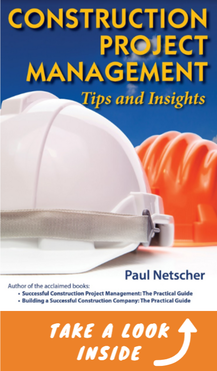 Want to read more construction management tips and insights? Read 'Construction Project Management: Tips and Insights' by Paul Netscher Winning construction projects is difficult. Winning new construction projects at the right price is harder. Image courtesy of stockimages at FreeDigitalPhotos.net Image courtesy of stockimages at FreeDigitalPhotos.net Construction companies regularly go from times of too much work to times when work is scarce. Unfortunately, the times when work is scarce are often far longer than the good times. Then, when work is won, it’s sometimes at the wrong price. Finding construction projects to price, then pricing them correctly is the most important job for construction companies. Yet, many companies don’t place sufficient importance on this task. Often projects are priced in a rush, or it’s left to a junior estimator. Some contractors price everything and anything, with little thought to the best construction methods to undertake the project, or indeed the best methods to win the project. Winning a new construction project is sometimes pure luck, or because the estimator made a mistake. "Pricing and winning a project starts long before the estimator begins pricing the project and it often ends after the price is submitted" Pricing a construction project correctly, and then winning it is a skill and an art, and it’s definitely a team effort and should never be left entirely to the estimator. Indeed pricing and winning a project starts long before the estimator begins pricing the project and it often ends after the price is submitted How to win new construction projects at the right price.1. Good construction market intelligence. It’s vital to understand what new construction projects are coming up in the near future. Where are your competitors working? You don’t want to be winning a risky project at a low-profit-margin when better projects could be just around the corner. But good market intelligence also means that you can be talking to the client before the construction project is offered to other contractors to price. You can make sure that you will be invited to price the project. You can even start some preliminary work. In one case I managed to persuade the client to negotiate a major construction project only with us, rather than them asking us plus other contractors to price the project - so I managed to exclude other contractors from competing. 2. Build a good reputation. You’re not going to win projects if you have a poor reputation. Reputation is based on delivering quality work, safely, on time and with minimal fuss. Some clients will pay a premium to employ a contractor that they have confidence will deliver their construction project successfully. 3. Build relationships. Build relationships with your clients. Repeat business is often the best business. Some of our clients awarded projects to our company on the condition that we allocated construction teams to the project that they had previously worked with. Most of our construction projects were for clients we had previously worked with. Having a good relationship with a client may also mean that they recommend your construction company to others. 4. Pick the right construction projects to price. Don’t drown your estimators with projects that you can’t win, or projects that have high risks and low rewards. Pick the construction projects that will be good, then put every effort into winning those projects. Should contractors price every project? 5. Understand your competitors. Who are your competitors? Are they desperate for work? Is this the type of construction project they like pricing? Are they working in the area? Do they have a good relationship with the client? Will they be competitive? Do they usually beat you? Indeed sometimes it may not be worth pricing a construction project if the opposition has a good working relationship with the client, or they have a competitive advantage. Don’t waste your time pricing a project you’re probably can’t win. Spend time pricing construction projects you have a reasonable chance of winning. How much profit? 6. Understand your client. Do you know what’s important to the client? If they are very safety focused, then make sure that safety is highlighted in your price submission. Show them that safety is important to your company and demonstrate how you will build their project safely. Of course, part of understanding the client is to know that they have money for the project and they don’t have a reputation of withholding payments from contractors or engaging in legal disputes – you certainly don’t want to win a construction project where you might not be paid for your work! In construction it’s important to know your clients. It could save you. 7. Understand the construction project. This is obvious, yet some contractors don’t always understand the project scope or risks. What are the risks? Can you complete the project in the allotted time? Visit the project site. Read through all the pricing and project documents. Asking questions in the bidding process 8. Be Strategic. Is there an alternative construction method? How can you make your price cheaper, but not lose money? What will make the client select your construction company over others? How can you win the project at the right price? We won some construction projects by submitting alternatives solutions to the client – the client got a cheaper price, we won the project and we made a bundle of money. "Show that you should be the contractor of choice, even if your price isn’t the cheapest." 9. Get your price right. Prepare a construction schedule (programme). Adjudicate suppliers’ and subcontractors’ quotes carefully. Ensure you have allowed for all your obligations. The construction project tender or bid schedule Check arithmetic – you wouldn’t be the first contractor to make a silly calculation error, or forget to price an item. Where do estimators get their prices? 10. Put together a winning price submission. Your price submission must include everything that the client requested. Missing a requirement or document could lead to you being disqualified. The price is more than a price, it’s a chance to advertise your construction company and to demonstrate that your company has the resources and capabilities to build the project. Show that you should be the contractor of choice, even if your price isn’t the cheapest. 11. Give a winning bid presentation. If you’re lucky enough to be one of the lowest bidders and the client likes your price submission they’ll probably call you to a meeting, or ask you to give a presentation. Like a fisherman the fish has taken the bait, now you have to pull the fish in without it escaping. Don’t lose the project now. Construction project bid negotiations – Don’t make a mistake Ask for an agenda for the meeting so you can be prepared. Ensure that everyone in your team understands the project and your price submission. Unfortunately, some senior managers go to these meetings ill-prepared, some even give away money in the course of the meeting just to secure the construction project, while others display a lack of understanding of the project and what’s important to the client. Ensure that you have all of the pricing documentation with you and that it’s filed where information can quickly be retrieved to answer questions. This presentation is your opportunity to demonstrate that your company understands the construction project, that you know what’s important to the client, that your company has the resources to deliver the project and that you will construct a great project with minimal fuss to the client. You have to sell your construction company as being the best for the project – but don’t do this by bad-mouthing the other contractors, rather by demonstrating your performance on previous similar construction projects and your understanding of this project. It’s often useful to take some of your proposed construction team to these meetings so the client can meet the people they could be working with. Start building the relationships now. 12. Don’t be bullied into the wrong price or an impossible construction schedule. You’ve almost landed the project. You can almost smell success. But, at this late stage the client is often looking for concessions – possibly in the form of a discount, removing a condition in your price, or squeezing you to finish the project earlier. Managers unfamiliar with the project and how the construction schedule and price has been developed may be quick to concede these points – they can say they won the project for the company. But at what cost? No matter how desperate the company is to win the project, care must always be taken to ensure that the project is won at the right price, and that the company is capable of completing the project in the agreed time. I’m not saying you shouldn’t make concessions, but these must be reasonable and attainable. If the client’s requests are unreasonable explain to them why your company can’t accede to them, or offer alternative solutions – maybe you can offer a discount for earlier payment or if smaller retainage is withheld. It often takes more than price to win a construction projectIt often takes more than price alone to win a construction project. But anyway, do you really want to win a project just because your price is the lowest? It’s critical to build a good reputation, to develop relationships, to understand the market and the opposition, price the project correctly, then sell your company to the client. Convince them that you are the best contractor for their project. Can you improve your company’s chances of winning projects This article was first published on the ClockShark website. Please share this post © 2019 This article is not to be reproduced for commercial purposes without written permission from the author. Do you want to learn how to manage construction projects successfully"This book helps with practical tips learned from real experiences. A must read book for the people who are involved in construction projects, especially project managers." Reader on Amazon To read more about the author’s books and find out where you can purchase them visit the pages on this website by clicking the links below:
To read more about the author visit the page 'Paul Netscher' Want to contact Paul Netscher please enter your details on 'Contacts' Find out how Paul Netscher can help you Berlin airport a construction project gone wrong Picture courtesy of Getty Images and BBC Picture courtesy of Getty Images and BBC This construction project is 7 Years late, 3 times over budget and at one stage had half a million defects. Learn why this construction project has cost nearly 6 billion Euros and still has not opened to aircraft 7 years after the airport was due to open. Read... or Listen to the Berlin Airport fiasco 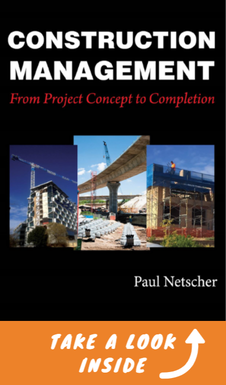 Learn how to avoid construction fiascoes. Read more about the author’s books and find out where you can purchase them visit the pages on this website by clicking the links below:
To read more about the author visit the page 'Paul Netscher' Want to contact Paul Netscher please enter your details on 'Contacts' Find out how Paul Netscher can help you |
Archives
June 2024
Note: We welcome genuine comments, especially comments that add additional information to the subject matter in the article. We however reserve the right to remove inappropriate comments, which includes comments that have nothing to do with the subject, comments that include inappropriate language, and comments that are an advertisement for a product or company, or which include an advertising link. Comments must be in English. We will not enter into discussion on why a particular comment was removed.
CategoriesCopyright 2016 - The attached articles cannot be reproduced for commercial purposes without the consent of the author.
The opinions expressed in the attached articles are those of the writer. It should be noted that projects are varied and different laws and restrictions apply which depend on the location of the contractor and the project. It's important that the reader uses the supplied information taking cognisance of their particular circumstances. The writer assumes no responsibility or liability for any loss of any kind arising from the reader using the information or advice contained herein. "I have what I consider some of the best books on construction management."
Books are available from: Amazon.com Amazon.co.uk takealot.com kalahari.com Amazon.in Amazon.de Amazon.fr Amazon.it Amazon.com.au Powell's Fishpond uread bokus Amazon.ca Amazon.es Other retail stores Available in paperback or on Kindle "28 YEARS OF CONSTRUCTION PROJECT MANAGEMENT EXPERIENCE, DEVELOPING SUCCESSFUL CONSTRUCTION PROJECT MANAGERS AND BUILDING SUCCESSFUL CONSTRUCTION COMPANIES"
|

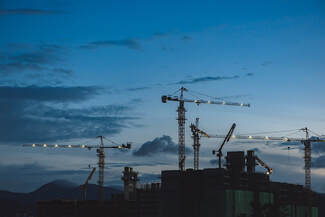

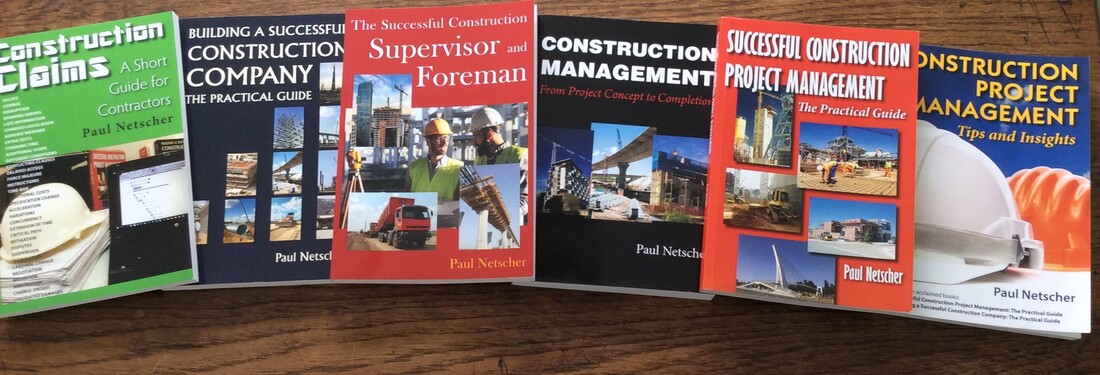
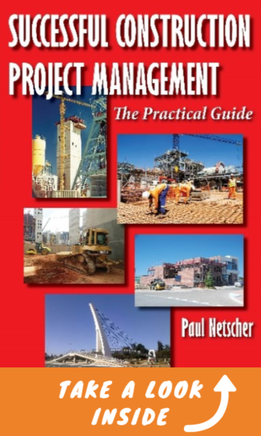


 RSS Feed
RSS Feed




